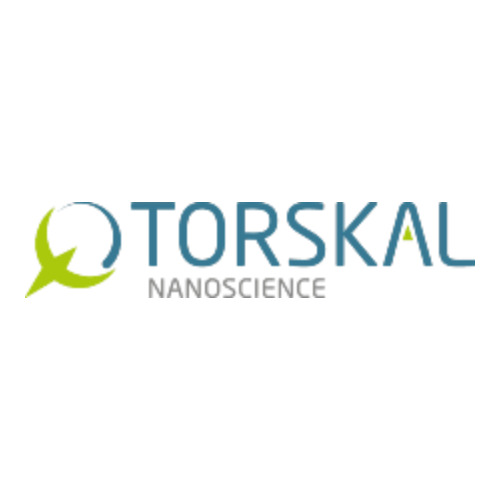


Explore how gold nanoparticles synthesis works: from classic chemical reduction to green and AI-driven methods powering new technologies.
La Réunion, France— July 10, 2025 — As gold nanoparticles (AuNPs) revolutionize fields from medicine to electronics, many are asking: How does gold nanoparticles synthesis work? Today, Torskal , a leader in advanced materials, unveils a detailed guide exploring modern synthesis techniques—from classic chemical reduction to green and autonomous methods—and their transformative applications.
Gold nanoparticles, sized 1 to 100 nm, exhibit remarkable optical, catalytic, and electronic properties due to surface plasmon resonance (SPR). Instead of yellow, colloidal gold can appear red, blue, or purple, depending on particle size and shape. These properties enable key applications in medical diagnostics, drug delivery, photothermal therapy, and environmental sensing—propelling demand for reliable synthetic processes.
The Turkevich–Frens method is the gold standard for producing near-spherical AuNPs (~10–20 nm). In this process:
Chloroauric acid (HAuCl₄) is heated in water.
Sodium citrate reduces Au³⁺ to Au⁰ and stabilizes the nanoparticles.
Particle size is tuned by adjusting citrate concentrations.
A visible color shift to red signals successful synthesis arXiv+3Wikipedia+3arXiv+3Dove Medical Press+1arXiv+1.
Technical analysis confirms controlled nucleation via transient gold “nanowires” before final particle formation Wikipedia. Reddit chemistry users note:
“You basically boil Au(III) ions … add citrate … change in color. The dark red is … free nanoparticles” NCBI+5Reddit+5Reddit+5.
For anisotropic shapes like rods:
Small seed particles are synthesized (often via citrate).
A growth solution with HAuCl₄, ascorbic acid, CTAB, and Ag⁺ ions is prepared.
Seeds are incrementally added to control aspect ratio Dove Medical Press+14Wikipedia+14RSC Publishing+14.
This method enables creation of gold nanorods with specific optical properties, useful for applications like photothermal therapy and enhanced sensors.
Applying ultrasonic energy during citrate reduction accelerates formation of pentakis dodecahedron and other shapes within 20 minutes, with tunable SPR peaks between 525–560 nm FrontiersarXiv.
Mechanochemistry uses grinding and milling to create nanoparticles without solvents, reducing environmental impact. Models show efficient grain formation at room temperature .
A physical method where lasers ablate gold in liquid to produce clean nanoparticle colloids—free from chemical residues. Though equipment-heavy, it’s considered green and precise Frontiers+15Wikipedia+15IOPscience+15.
Green chemistry leverages plant and microbial extracts to reduce and stabilize AuNPs, offering eco-friendly routes:
Capsicum chinense leaves produce stable spherical AuNPs using phytochemicals as reducing agents Wikipedia+12MDPI+12Dove Medical Press+12.
Gracilaria crassa seaweed extract generates ~32 nm AuNPs, though potential ecotoxicity exists PubMed.
Dillenia indica, Moringa oleifera, and Melissa officinalis extracts produce biocompatible AuNPs with antioxidant and low-cytotoxicity profiles IOPscience+1RSC Publishing+1.
Artocarpus odoratissimus peel extract yields AuNPs with catalytic and optical filter properties King Saud University Science.
Aconitum violaceum leaf extract synthesizes gold–silver bimetallic nanoparticles with antibacterial, antioxidant, and photocatalytic functions Frontiers.
Fungal methods using Fusarium or Aspergillus species further demonstrate eco-friendly biogenic routes Wikipedia+1RSC Publishing+1.
These green methods provide safer synthesis strategies while adding functional bioactive coatings native to each extract.
Recent advances introduce AI-guided synthesis systems. For example, the ScatterLab method uses real-time scattering data to autonomously produce gold nanoparticles with precise atomic structures (e.g., decahedral vs. fcc, 5–10 nm) ResearchGate+8RSC Publishing+8Dove Medical Press+8arXiv. This represents a future where fully controlled, data-driven nanoparticle design becomes standard.
Successful AuNP synthesis requires tight control of:
Size: Smaller particles (<10 nm) enhance catalysis and uptake; larger ones (>50 nm) improve optical signals.
Shape: Spheres, rods, stars offer tailored SPR for specific applications.
Surface Chemistry: Capping agents like citrate, polymers, or biomolecules define stability and functionality.
Optical Characteristics: Visible SPR peaks correlate with size; green and AI methods enable customization.
Biomedical: AuNPs enhance cancer imaging (photoacoustic), drug delivery, miRNA biosensors, and biosensing arXiv+7Frontiers+7Dove Medical Press+7.
Electronics: Enable conductive inks and flexible electronics via controlled-sized particles.
Cosmetics: Leveraged for skin serums due to antioxidant properties.
Gold nanoparticles are widely regarded as biocompatible, but size, coating, and dosage impact toxicity. Agencies like FDA and EPA are formulating guidelines. Green synthesis methods generally reduce hazards, yet ecotoxicity remains a concern—highlighted in the Gracilaria case PubMed. Quality control and environmental assessments are integral to responsible adoption.
To demystify nanoparticle science, Torskal is launching:
Interactive webinars demonstrating Turkevich, seed-mediated, and green synthesis.
Open-access lab protocols with video tutorials and troubleshooting guidance.
Downloads and toolkits for nanoparticle design across educational levels.
“We want to show not just how gold nanoparticles synthesis works, but why it matters,” said Dr. Maya Chen, Lead Nanochemist. “Our green platform scales from lab to industry, minimizing environmental footprints.”
Nanoparticle synthesis is rapidly evolving:
AI-guided platforms enable automated creation of tailored nanoparticles.
Hybrid materials incorporate DNA, antibodies, or selenium for multifunctionality Wikipedia+1Reddit+1.
Sustainable scale-up uses mechanochemistry, laser ablation, and green biosynthesis to meet future demands.
These directions promise smarter, safer nanoparticles for the coming decade.
Torskal leads in nanomaterial innovation—from bench science to real-world products. We develop scalable green methods, AI design tools, and biotech integrations to apply gold nanoparticles responsibly across industries.
Torskal , Director of Nanotech Communications
Phone: (+262) 692 72 02 92
Email: [email protected]
Website: https://www.torskal.com
